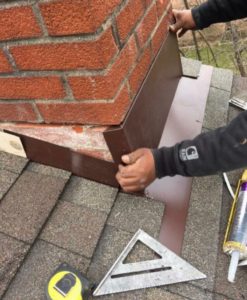Replacing Your Roof?
Be sure to consider these factors when planning your next roof replacement.
Replacing your roof is a huge investment, and it’s easy to assume that the cost of roof replacement always includes the same things. Your home is probably your most valuable asset, and roof replacement is one of the most expensive maintenance items you will have to deal with. When my wife handled our roof replacement 5 years ago, she made the mistake of assuming that the larger companies provided higher estimates simply because those companies have higher overhead. She wanted to help out the little guy and save money at the same time, but she failed to ask what was included for the price they quoted. Always ask for itemized estimates, and consider these factors the when it’s time to replace your roof.
1. Does the cost of roof replacement include removing old shingles?
What if there’s more than one layer of shingles present?
2. Is any new sheathing (or decking) included in the cost of roof replacement?
Some contractors charge extra for every piece of new sheathing required, but usually estimates include a few pieces.
3. Is drip edge flashing included?
Drip edge flashing directs water away from the fascia and into the gutter. Shingle manufacturer warranties require that the shingles be installed according to their specifications, so the absence of drip edge flashing may void your shingle warranty.
Missing drip edge flashing leaves the sheathing & fascia vulnerable to water damage.
Proper installation with drip edge flashing.
4. What type of flashing will be installed around chimneys?
This is particularly important at masonry chimneys where the flashing material should be embedded into either the mortar joints or a groove cut into the brick. Less expensive estimates for replacing your roof may use flashing that relies solely on sealant. This type of flashing will require continuous maintenance in order to avoid leaks around your chimney. If your budget dictates your choice of flashing, you will want to know so you can stay on top of maintenance and avoid leaks.
5. Do you need a cricket behind your chimney?
You need a cricket if the roof slopes toward a chimney that is more than 30 inches wide. My wife made the mistake of choosing a roofer that did not include the cost of adding a cricket in his estimate. Our roof is over 60 inches wide!
A cricket helps to divert water around the chimney and down the roof. It also prevents debris and snow from accumulating behind the chimney.
Without a cricket water can pool behind the chimney and seep into the roof. This will eventually cause rot and structural damage, often before you see signs inside the home.
We actually had a leak around our chimney prior to replacing our roof, but my wife didn’t know what a cricket was, much less how important a cricket is to preventing leaks!
6. Will old and unnecessary vents be removed from the roof?
A ridge vent is standard now, but power vents and box vents were common in the past. You’ll want to make sure that unnecessary vents are removed during roof replacement. Any penetration in the roof is an opportunity for a leak!








